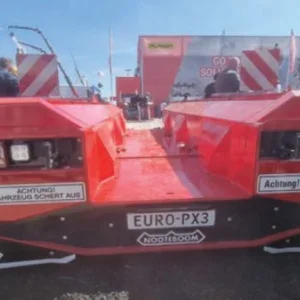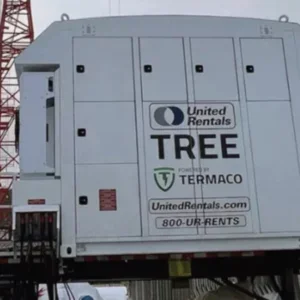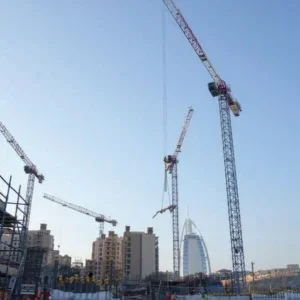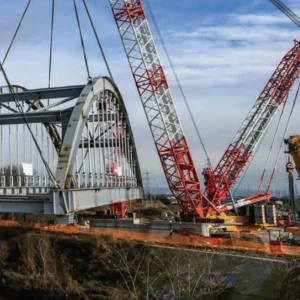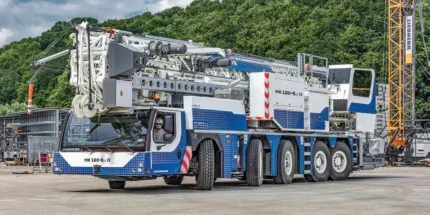
The ‘SWOT analysis’ business strategy tool can be useful in helping organisations assess how they compare to competitors and to evaluate their position in the wider international political and economic environment.
By identifying strengths, weaknesses, opportunities, and threats a SWOT analysis can help paint an accurate picture of the business landscape.
Set against the backdrop of Bauma 2025, the world’s largest trade show – where Liebherr traditionally has the biggest stand, the company’s many strengths are showcased. And in this interview Christoph Kleiner, MD of sales at LWE, highlights many of the reasons underpinning this success.
He goes further, however, and gives a frank assessment of potential threats and challenges – providing a full SWOT analysis.
Topics including Chinese competition, Trump’s tariffs, Russia, investments, aftersales service, and technological development, are all discussed…
STRENGTHS
CT: What are Liebherr’s key competitive strengths in its lifting portfolio?
Kleiner: We offer the largest range of mobile and crawler cranes in the world. We do this through direct sales, in direct, daily exchange with our long-standing customers all over the globe.
With our worldwide service network we are directly on site at our customers’ locations and can ensure a high level of equipment availability in the field. This is also thanks to our stock of spare parts in numerous countries on all continents.
With our used crane business, we also offer optimum solutions to customers who require fast availability or want to operate a reliable Liebherr crane with a stable value despite having a smaller budget.
The ability to retrofit and install new technologies and digital products such as Liebherr Connect and our telemetry applications in old models and existing series cranes ensures that our cranes are always state-of-the-art and can be used worldwide – without local conversions and expensive adaptations.
New technologies are key and at this year’s Bauma we are presenting a whole range of new, electrically powered mobile and crawler cranes. This makes us, by far, the largest supplier of alternatively-powered mobile cranes in the world.
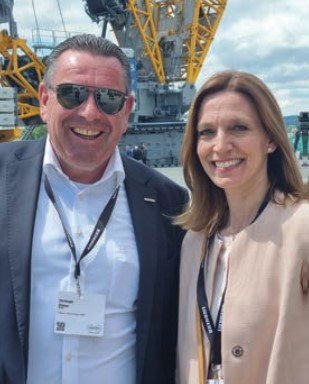
Which crane product lines or crane types are doing the best at the moment?
LTM all-terrain cranes have been our largest product line for years. Demand remains high, especially for cranes with more than five axles.
We are also seeing good demand for the larger crawler cranes in the project business.
And with the MK product line, which we now sell in-house, we are seeing initial success in new markets.
We have taken over sales and service from our sister plant in Biberach and are now clearly focussing on growth in internationalisation without neglecting the core markets in Central Europe.
Are there any particular industries driving demand for specific cranes or crane types right now?
Our cranes are absolute allrounders, they are used in numerous industries via our customers who are traditionally active in crane rental, whether in construction, material handling, salvage, refineries, petrochemicals or infrastructure expansion.
We currently see energy as the main driver in Europe, with all the associated trades required to ensure the necessary energy supply. A similar trend can be seen in future investments in upgrades and renewals of existing infrastructure and also new expansions. We think this trend will last for quite a number of years.
How strong is Liebherr’s brand reputation at present?
We like to talk here about our Liebherr package, which goes far beyond the sale of a crane. Service, partnership at eye level, reliability and a shared understanding of values are also part of this – and many other points.
We work every day with our team in Ehingen and our team worldwide to further expand and consolidate this strong partnership with our customers. We want to do this first and foremost with the most reliable crane in use.
This also includes the focus on alternative drives and the topic of digital products and digital services – here, too, we will be presenting new topics and approaches at this year’s Bauma.
What technological innovations help set Liebherr apart?
There is no single technology – every crane must have a coherent, economical concept to ensure that it is the right crane for the job. There is a large selection of mobile cranes and sometimes other lifting solutions. I believe that we have been successful over the years with our wide range of mobile and crawler cranes, with state-of-the-art technologies and new approaches to lightweight construction to get even more lifting capacity out of the machines.
In the end it is not a technology but a pioneering spirit that shapes us and drives us forward. The mindset, the attitude of wanting to take the next step.
Has the diverse nature of the Liebherr group’s wider product portfolio, ranging across different industries, provided any particular advantages for the lifting division?
Of course we see advantages, especially from the common area of construction machinery, but also from in-house component development and production. This means that our components are optimally matched to our products and their areas of application.
We also benefit from the wide range of products in our Group when it comes to new digital solutions that we connect to our machines via Liebherr Connect and the MyLiebherr digital ecosystem. Numerous applications can be jointly developed across individual product areas and brought to market maturity.
The Liebherr Group was, and is, fully owned by the Liebherr family. As an owner-managed company, we have clear values and goals. We are active in over 140 companies in more than 80 countries worldwide and continue to significantly strengthen our local expansion on site, at the customer’s premises, with investments in the very high three-digit million range last year alone. In this way, we are strengthening our global presence for the benefit of our customers.
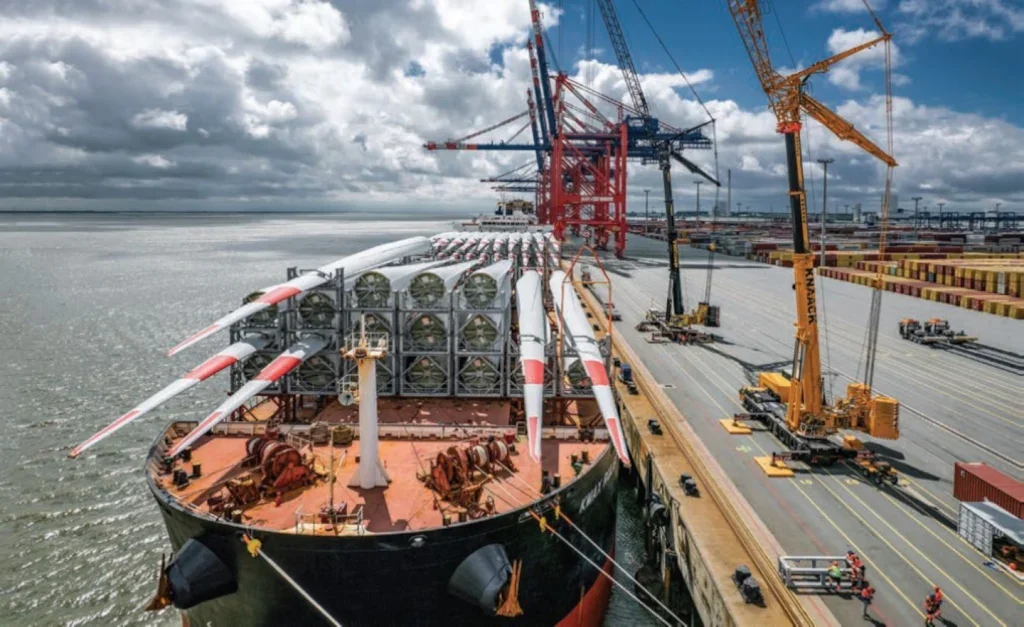
How important is customer service and after-sales support to Liebherr’s success?
Quite simply, it is a decisive key to success. Our machines must be available for maximum use. This requires good engineers, highquality production and, ultimately, optimum service in the field. Our machines are designed and built to run for over 25 years in the field. The availability of spare parts, knowledge of the equipment and specialised service technicians on site are absolutely crucial!
WEAKNESSES
Are there any supply chain ineciencies affecting Liebherr?
We have been committed to a local supply chain for years. This has reliably supplied us with everything we need to build and operate our cranes, especially in recent years due to the coronavirus pandemic and the war in Ukraine.
Here, too, the following applies to us: reliable, trusting partnerships built over decades. We are therefore proud of our stable supply chain, which has set us apart from the competition, especially in recent years.
How much is the continuing war between Russia and Ukraine affecting profits?
The Russian market has been an important market for Liebherr, both for mobile cranes and for the Liebherr Group, for many years. The loss of this market is therefore annoying, but we were able to compensate for this quite well in our mobile cranes division with growth in other markets.
Does Liebherr rely too much on certain markets or regions?
Like all our western competitors, we only have limited resources at our disposal. Of course, we use these primarily where we have had good customers for many years and do good business with them for everyone involved.
These are many western countries, as well as numerous markets in South America, the Middle East, Asia and Africa. We are strong here and want to remain strong and further expand this presence. We are investing in numerous service locations, for example in Germany, France, the USA, Australia, Mexico and Saudi Arabia now.
In recent months, we have seen new competitors from China who are becoming very active, particularly in the global South. The rules of the game are different for them: They are heavily subsidised by the state, supported by the Chinese government both ideally and financially. Attempts are made to gain market share by, to put it bluntly, dumping prices. Driven by a difficult economic situation in the Chinese domestic market. This is a different kind of competition that needs to be understood and criticised.
Are there any product lines/crane sector types not doing so well at the moment?
It’s not so much specific product lines but the economic weakness in Europe at the moment that is causing us some concern.
Germany, our most important market, is in recession; interest rates and inflation have exploded as a result of the war in Ukraine which has led to a slump in the construction industry throughout Europe especially in residential construction. Smaller telescopic cranes, the 3- or 4-axle cranes, are often used here. We have indeed seen a decline in order volumes here in recent months.
Added to this is the politically uncertain situation in many European countries, but also in the USA in the last half of 2024. Understandably, many customers are waiting for clarity on the upcoming subsidy programmes.
We are therefore assuming that we will hopefully enter more politically stable times and be able to emerge from the phase of economic weakness.
How does Liebherr’s pricing compare to its competitors? Is it too expensive for some?
We review our prices regularly. The consequences of the war in Ukraine, with inflation and rising interest rates, are unfortunately a problem for all western crane manufacturers. High energy prices, significantly increased labour costs. Competitors from China didn’t have that.
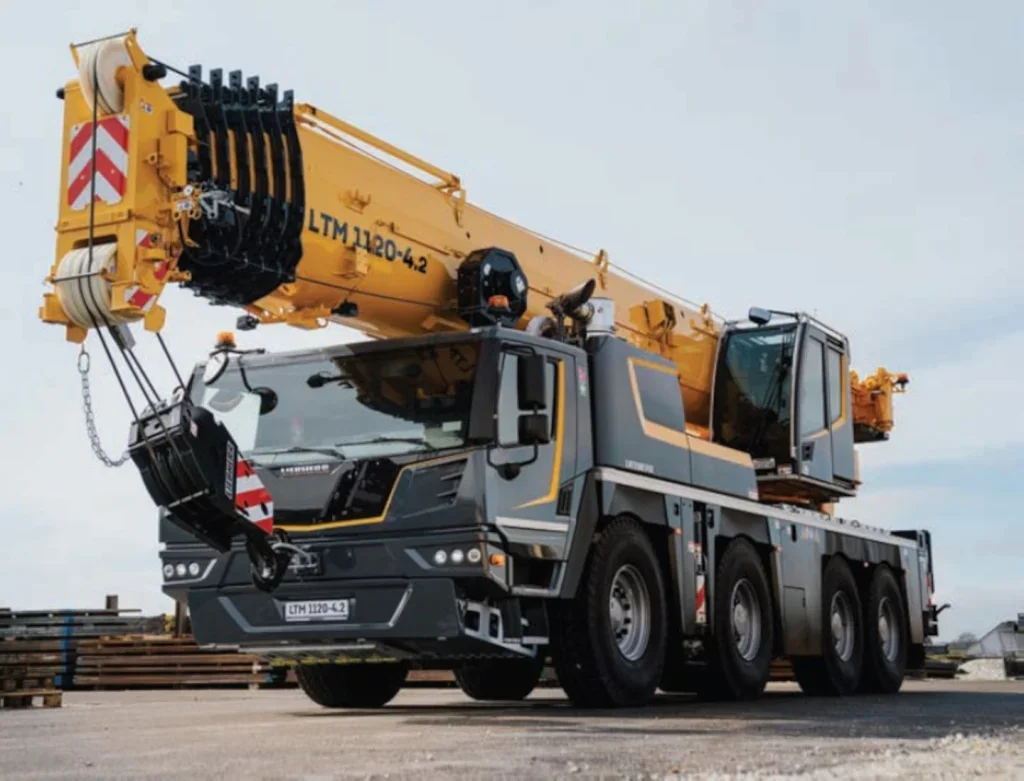
Political support from the EU and the new German government is also needed here. Nevertheless, we are also working hard to counteract the permanent rise in prices. Since some months we are able to keep the investment for our machines on a constant level and we expect that we can hold that for some more time.
Is Liebherr affected by any skills shortages? Or are there any challenges in talent acquisition or employee retention?
The skills shortage has been with us for many years. Whether IT or production. There are always areas where it is difficult to find suitable employees. But Liebherr is a top employer, a major player, in the region. We notice this time and again; we see it in our employees.
We have a great corporate culture and a great sense of togetherness. That attracts people.
We often have three generations of the same family working for us, and we are located away from major metropolises – that also helps.
Most of our employees have been with us for decades and we work hard to keep the fluctuation rate low – this helps us to counter the shortage of skilled workers, secure knowledge and build cranes of the highest quality and technology.
How is Liebherr adapting to digital transformation and automation?
We could certainly be faster here. But automation often does not automatically mean cutting costs and or better quality.
We need to look closely at which process steps automation makes sense, and is sustainable, to use. Incidentally, this applies to the entire digital transformation.
Our customers can see some useful examples and implementations at our plant during Bauma. As part of the factory tours, we will show where we are already working with AI today, using robotics and automation to simplify processes and increase quality as a result.
OPPORTUNITIES
How can Liebherr capitalise on the growing demand for sustainable and electric machinery?
At Bauma we are presenting an all terrain crane with an electric drive and battery for the first time. However, this five-axle crane is not the only electrically powered machine. There will be numerous crawler cranes in the segment up to 300 tonnes, such as the new LR 1300.2 SX, and we will also be exhibiting our LTC 1050-3.1E, a hybrid.
And with the MK series, we have numerous other mobile cranes that can be operated electrically. This gives us a broad base with a large product range and, in the meantime, the necessary expertise in this drive technology.
We have set up our own research and competence centre for battery technology within the Group. But: not only electric, HVO is also an important drive.
With HVO, the existing crane fleet can be converted immediately, which directly saves up to 90% of CO2 emissions – of the existing fleet! And: We are also on the move in the hydrogen sector in the company group and will be presenting a hydrogen-powered wheel loader ready for series production at Bauma.
Will diesel ever be phased out? If so, how long will this take?
Diesel will certainly disappear at some point. But we suspect it will take many years, especially for heavy machinery.
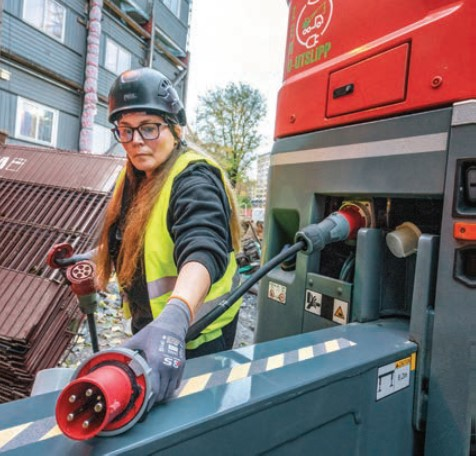
Here is our answer: HVO and synthetic fuels. These can already be used today in over 90% of all Liebherr cranes and thus save over 90% of CO2 emissions. Therefore: Switching to HVO, but continuing to use combustion technology, especially for large, heavy machines, is the right approach.
Batteries to operate a nine-axle vehicle are not economical at the current stage of development.
The important thing for us is to be open to all technologies. Every crane, every application scenario has different requirements. So sometimes the combustion engine, sometimes the electric motor and perhaps at some point the hydrogen engine or fuel cell may be the right technology. It is therefore not sensible to make a commitment from today’s perspective.
Can an all terrain ever be completely electric? If so, which capacity range will this most likely happen with first?
It is already possible today. The question is always whether it is economical and sensible. In terms of the required battery storage volume alone, this will probably be a smaller all terrain crane when the time comes.
The decisive factor is the driving performance and range. However, there is still development work to be done in battery technology.
Is Liebherr’s own manufacturing heading towards net zero emissions/carbon neutral?
We are working hard to reduce our CO2 footprint. We are pursuing the common European goal of being carbon neutral by 2050.
For us, this means major efforts on site, investments in steel construction, painting and heating.
Our entire vehicle fleet has been converted to HVO, and we are also continuing to expand battery-electric drives in our vehicle fleet.
We have already installed over five megawatts of photovoltaics and are continuing to expand – and have been producing exclusively with green electricity from wind power since 2021.
We also see it as our responsibility to provide our employees and their families and children with a healthy quality of life and an environment that is fit for grandchildren.
Are there any new emerging markets or industries where Liebherr can expand?
By taking over the sales and service of the MK series from our sister plant in Biberach, we want to make this product series even more accessible to our well-known customers outside Europe in the future.
MK mobile construction cranes have particular value and capabilities in urban applications and our existing sales force is now ready to explain the benefits and capabilities of these machines to our customers in many more countries.
We are selling four different types here – one of which we will be showing directly at Bauma, and two others that our customers and interested parties can test for themselves right next to the exhibition grounds in Munich.
And for sure we see markets in all areas where security plays a key role. Data security is very often important, especially in all construction sites of critical infrastructure. Here we are under the hardest data right policy in the world, which certainly is a key point in such projects – and a field of business that we are trying to grow.
Is Liebherr leveraging AI, IoT, or automation for smarter machinery or in manufacturing?
We have been working on the topic of the digital factory for months. There is already a digital twin of every crane as soon as assembly of the crane begins. This helps with many process steps.
We are also already using AI and automation solutions in numerous areas. In welding, in hose and pipe production, or in the sorting and provisioning process. We will be showing numerous examples of this during the factory tours in Ehingen during Bauma.
Are there any government initiatives or infrastructure projects that Liebherr can or does benefit from?
Compared to the heavily statesubsidised products from China, where political will is paired with strong financing, no such support is currently available in Europe.
There are individual support programmes, for example, for the sustainable conversion of production facilities or the training of skilled workers. But nowhere near to the extent that is happening in China and from China, which in some cases distorts the market.
THREATS
How is Liebherr handling competition from Chinese companies?
There is no single solution at this point. Depending on the country, depending on the product, depending on the type, we work with different strategies.
One thing is clear: there is new movement in the market, sometimes with unfair, statesupported means. Here it is important to put together suitable, convincing packages for our customers in line with the Liebherr package. We work on this with our team every day, worldwide.
Do you think international trade laws or restrictions should be brought into effect to help protect manufacturers from unfair trade practices?
We are and have always been friends of open, fair competition. This ensures innovation, development and progress.
But if this competition becomes unfair, it becomes difficult. If we look at Chinese products that are filled to the brim with European components and then sold at heavily subsidised prices, this is no longer fair competition.
We are currently experiencing this in numerous industries and sectors, and it is clearly up to politicians to act.
A functioning market economy is the backbone of our prosperity and an important component of our free democracies. Politicians must create and adapt the appropriate regulations for this.
What effect do you think President Trump’s increased steel and aluminium tariffs will have on business?
The major western crane manufacturers all produce in Europe. Tadano, Grove, Sennebogen, Liebherr. We are often equally affected here – as are our customers. Among partners with fair means, tariffs are not the best solution.
How can Liebherr protect itself from global economic downturns or recessions?
Over many years, we have found that the Liebherr Group can weather times of crisis very well thanks to its diversification and global positioning.
There are always fluctuations, sometimes in markets, sometimes in industries. Our broad product range and global footprint are precisely the points that help us here.
Are environmental regulations impacting manufacturing?
Basically, stricter environmental regulations are cost drivers. But at the same time, they often drive innovation and development. And we have all recognised that we have to do something for the sustainable development of our environment.
That is why we are not only investing money in the sustainable development of our products, but also in the development and decarbonisation of our sites.
Is Liebherr at risk of supply chain disruptions?
Our supply chain is very regional in many areas. That is why we have come through the last few crises well, and we will continue to build on this in the future.
How long is the expected lifetime of a new crane before technology overtakes it and the purchaser wants the latest features? Is a five-year-old crane now outdated for a contractor who wants to be competitive?
We build top-quality cranes that retain their value for a long time. This value retention aspect is an important argument for buying a Liebherr crane.
A crane is often operated for over 30 years, albeit in different countries and by different owners. This is where our concept of used crane trading, which we also offer, comes into play.
We are happy to trade in a young used crane for a new one, which we then sell on into the second phase of its life.
In this way, technology-oriented customers can always have the latest equipment in their fleet, while customers who are more interested in value retention and have smaller budgets can still purchase reliable, well-maintained and durable Liebherr cranes.


